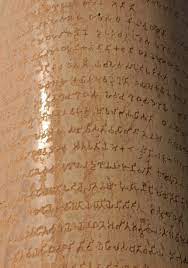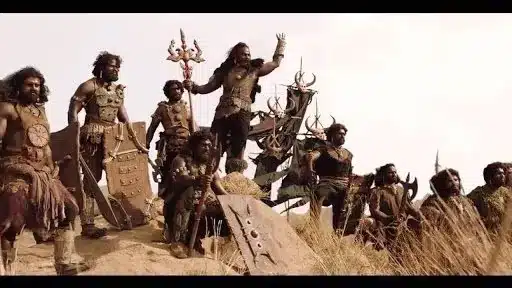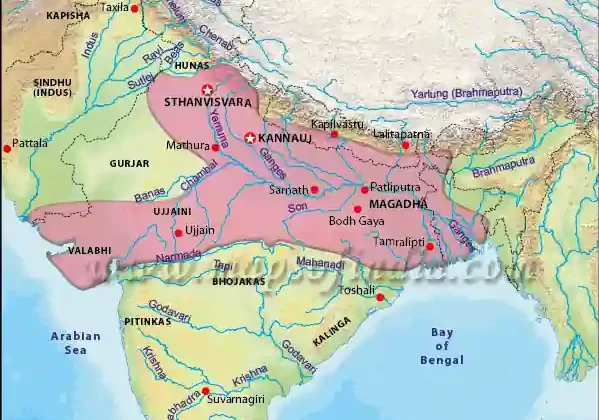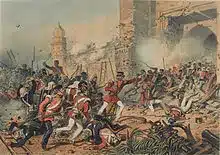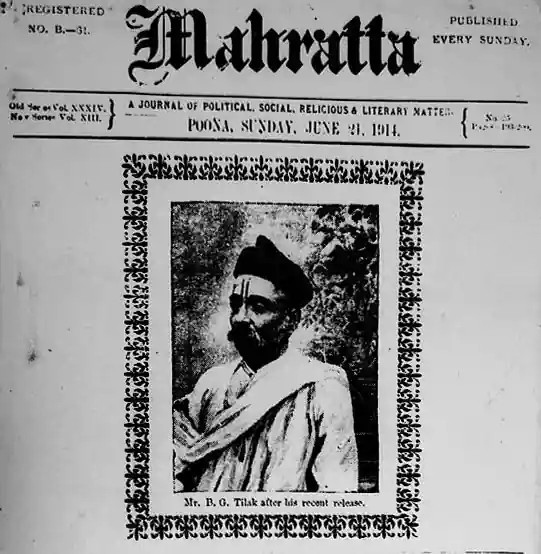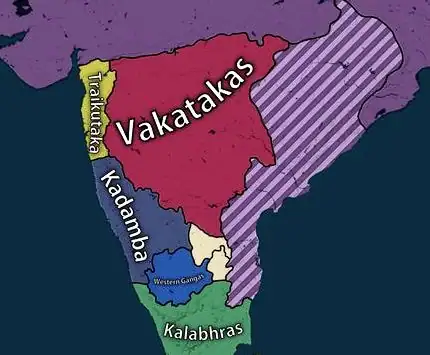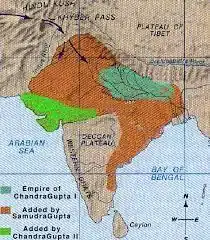The Shakas/Scythians
The Indo-Greeks were followed by the Shakas or Sakas who belonged to the Central Asian tribe – the Scythians. There were two different groups of Sakas the Northern Satraps ruling from Taxila and the Western satraps ruling over Maharashtra.
The history of Shaka rule is known largely through inscriptions and coins. On the basis of coins, certain kings who can be identified are Vonones (the earliest independent Parthian ruler of eastern Iran), Spalirises, Azes I, Azilises, and Azes II. Some coins even suggest the practice of conjoined rule as well. For instance, Spalirises and Azes I were probably co-rulers, as were Azes I and Azilises.
- The founder of the Shaka rule in India in the first century B.C. was Maues (Moga).
- Son and successor of Maues was Azes I, who was considered to be the founder of the Vikrama era.
- Shakas rulers of Taxila were overthrown by the Parthians.
- Patanjali in his Mahabhasya refers to the Shakas as ‘Anirvasita (pure) Shudras’.
There were five branches of the Shakas ruling from Afghanistan, Taxila, Mathura, Ujjain and Girnar.
- One branch of the Shakas settled in Afghanistan. Prominent rulers of this branch were Vonones and Spalirises.
- The second branch settled in Punjab with Taxila as their capital. Maues was a prominent ruler.
- The third branch settled in Mathura, where it ruled for about two centuries. Azilises was a prominent ruler.
- The Shakas of Girnar and Ujjain entered into conflict with the Satavahanas of the Deccan.
- The fourth branch established its hold over western India where they ruled until 4 century CE. They ruled for the maximum period on account of a flourishing economy based on the sea-borne trade in Gujarat and thus issued a large number of silver coins.
- The Shakas of Girnar were called as Kshaharathas.
- The important Shaka rulers of Girnar are Bhumak and Nahapana.
- The fifth branch of the Shakas established its power in the upper Deccan with Ujjain as their capital.
- The Shakas of Ujjain were called as Kardamakas.
- The important Shakas of Ujjain were Chastana, Jaydaman and Rudradaman l.
kshatrapas and Mahakshatrapas
- The Shakas and Scytho-Parthians ruled through kshatrapas (governors) or mahakshatrapas (subordinate rulers), who aided a lot in the expansion of the empire.
- For instance, during the reign of the Scytho- Parthian ruler Azilises, a kshatrapa Rajuvula aided a lot in the eastward expansion of his empire.
- Later, he took title of mahakshatrapa and functioned as an independent ruler of the Mathura region and was succeeded by his son Sodasha to the throne of Mathura.
- It is pertinent to note that these kshatrapas had a more independent status than was normal for an administrative governor, since they not only issued their own inscriptions in whatever era they wished to observe, but were also permitted to mint their own coins.
prominent Shaka kings are:
Maues/Moga/Moa (c. 80 BCE)
- Probably the first Shaka king in India who established power in Gandhara.
- Inscription found at Taxila mentions a Shaka king, Moga, and his kshatrapa/satrap (governor), Patika.
- His name also appeared on several copper and silver coins.
- His coins carried figures of typically Indian deities like Abhisheka Laxmi.
Azes
- Successfully annexed the territory in northern India of the last of the Indo-Greek king Hippostratos.
- He is also believed to be associated with the Vikram Samvat era of 58 BCE, which is used to mark Azes’ accession.
- This era was earlier reckoned with the victory of an Ujjain king named Vikramaditya over the Shakas.
- It is believed that Vikramaditya effectively fought against the Shakas when all other Indian rulers surrendered in front of them and from that time onwards, ‘Vikramaditya’ became a coveted title just like ‘Caesar’ for Romans.
Bhumaka (around c.78 CE)
- Originally owed allegiance to Kanishka.
- His coins, with legends in Brahmi and Kharoshthi, have been found at Malwa, Ajmer area, and coastal Gujarat.
Nahapana (c.119−25 CE)
- Progressed in his career from kshatrapa to mahakshatrapa and ultimately to rajan (king).
- His kingdom probably had its capital at Minnagara (modern Doha located between Ujjain and Broach) and included Malwa, Gujarat, Saurashtra, northern Maharashtra, and parts of Rajasthan and lower Indus valley.
- An inscription of one of his amatyas named Aryaman has been found at Pune district.
- His coins have been found at Ajmer, Rajasthan and Nashik, Maharashtra.
- Some of his donative inscriptions have been found in Nashik and the Karle caves of Maharashtra.
- It is believed that the Shaka Kshatrapas were involved in continuous conflict with the Satavahanas over the suzerainty over the Deccan and control over the western seaport areas frequently changed hands. For instance, the Nashik and Pune areas seem to have been conquered by either Nahapana or his predecessors from the Satavahanas.
- Later, around 125 CE, Nahapana is believed to have been killed by the Satavahana ruler, Gautamiputra Satkarni, who not only restruck Nahapana’s coins but also mentioned his victory over Nahapana in his inscriptions in the Nashik and Pune districts. This victory is also mentioned in his mother, Gautami Balashri’s, inscription.
- One inscription mentions that a field for providing food was granted to Buddhist monks by Ushavadata (Nahapana’s son in law).
Chashtana (around c.120 CE)
- Founder of the Kardamaka dynasty.
- Originally ruled in the Sind area as a subordinate of the Kushanas and was probably the kshatrapa of the South-western provinces of the Kushana empire at the time of Nahapana.
- The Kardamakas had the practice of senior (mahakshatrapa) and junior (kshatrapas) rulers.
- For instance, during the lifetime of Chashtana (the mahakshatrapa), his son Jayadaman and later his grandson Rudradaman I were kshatrapas.
- He was succeeded by the most famous ruler of his dynasty and his grandson Rudradaman I.
Rudradaman I (c.130 CE–152 CE)
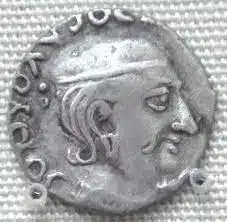
- The most famous Saka ruler in India was Rudradaman (130 AD-150 AD). He is famous not only for his military conquests but also for his public works.
- His empire was spread over almost whole of western India which included Sindh, Gujarat, Konkan, Narmada Valley, Malwa and Kathiawar except the Nashik and Pune areas.
- He is famous in history because of the repairs he undertook to improve the Sudarshan Lake from Chandragupta Maurya’s reign, located in the semi-arid zone of Kathiawar, and this task is described in the famous Junagarh or Girnar Inscription (dated in the Shaka year 72, i.e., 150– 151 CE).
- This inscription happens to be the first chaste Sanskrit royal inscription of early India, when all others were generally composed in Prakrit.
- His other achievements are also described through this inscription. The inscription mentions that he defeated Gautamiputra Satkarni, the lord of the Dakshinapatha, twice, but did not destroy him as he was a close relative.
- Rudradaman’s daughter was married to Gautamiputra Satakarni’s son Vasishthiptra Pulumavi.
- Vishvasena (Last Kshatrapa ruler who ruled at the end of 3rd century BCE and belonged to the Chashtana lineage)
The Parthians (Pahlavas): (1st Century BC – 1st Century AD)
- Indo-parthian kingdom is also known as Gondopharid Dynasty. This dynasty ruled Afghanistan, Pakistan and northern India, during the 1st century AD.
- Parthians were some Iranian tribes and in this tribe, the kings assumed the title Gondophares.
- In many ancient Sanskrit texts, they are mentioned together as the Shaka-Pahlavas.
- Interestingly, for some time, both ruled concurrently. Generally, the term Shaka-Pahlava/Scytho-Parthians is used for different groups of invaders who came from Parthia into north-west India in the 1st century CE.
- They replaced the Sakas in North-Western India, but controlled an area much smaller than the Sakas.
- Gondophares-I seems to be the first rulers. Since the Parthians lived with Scythians for quite a long time, the features on coins mix up a lot.
- In due course of time, the Parthians, like the Shakas, became assimilated into the Indian society and became an integral part of it.
- After the Gondophares, the Indo-Parthian rule in India ended and soon Kushanas overpowered them.
- A famous Parthian king was Gondaphernes/Guduvhara in whose reign St. Thomas is said to have come to India from Israel for the propagation of Christianity.
| Mauryan Empire | Sites Of Indus Valley Civilization |
| Vedic Period | Vedic Literature |
| Marriages In the Later Vedic Period | MCQs: History Of Ancient India |

